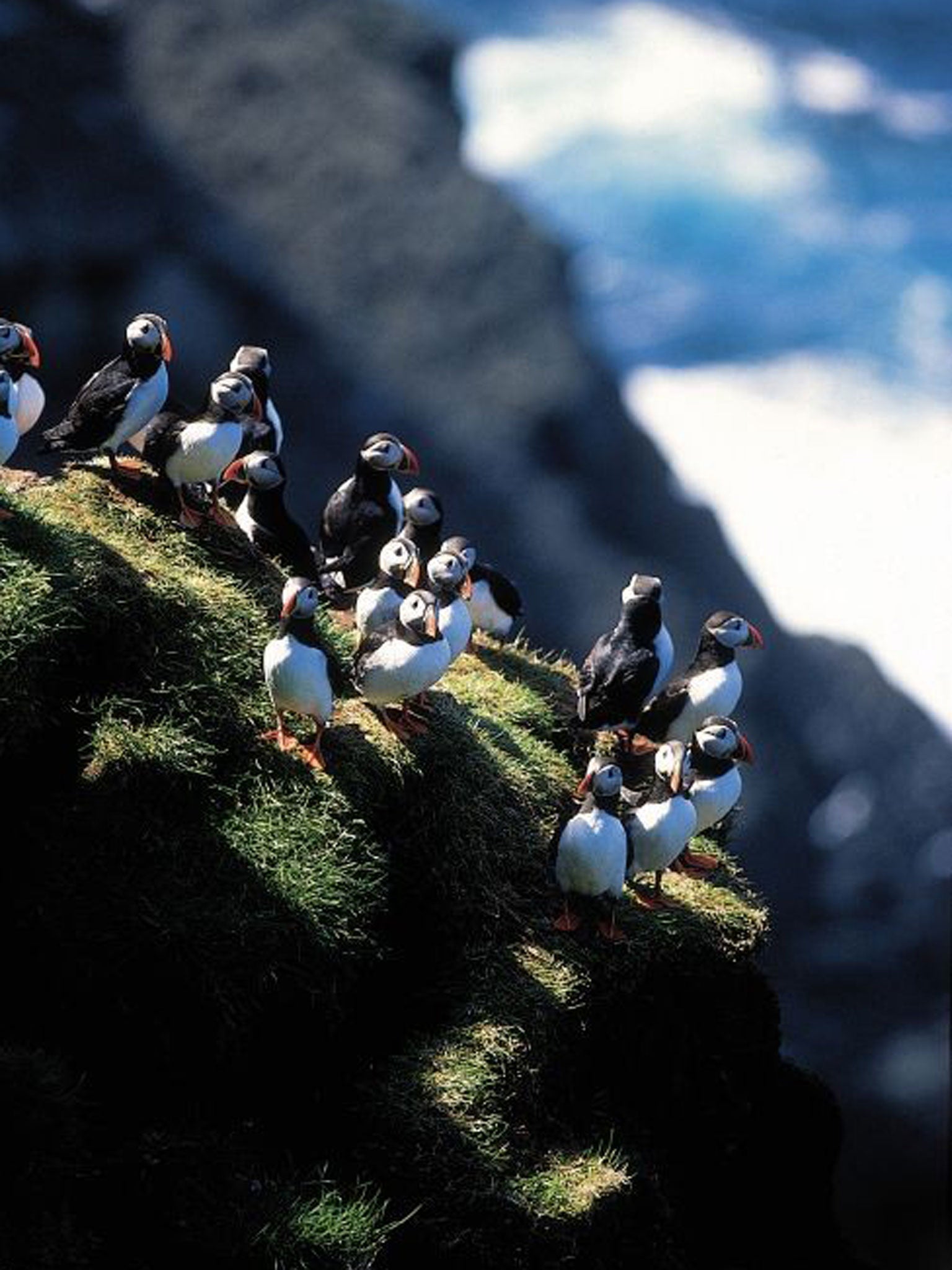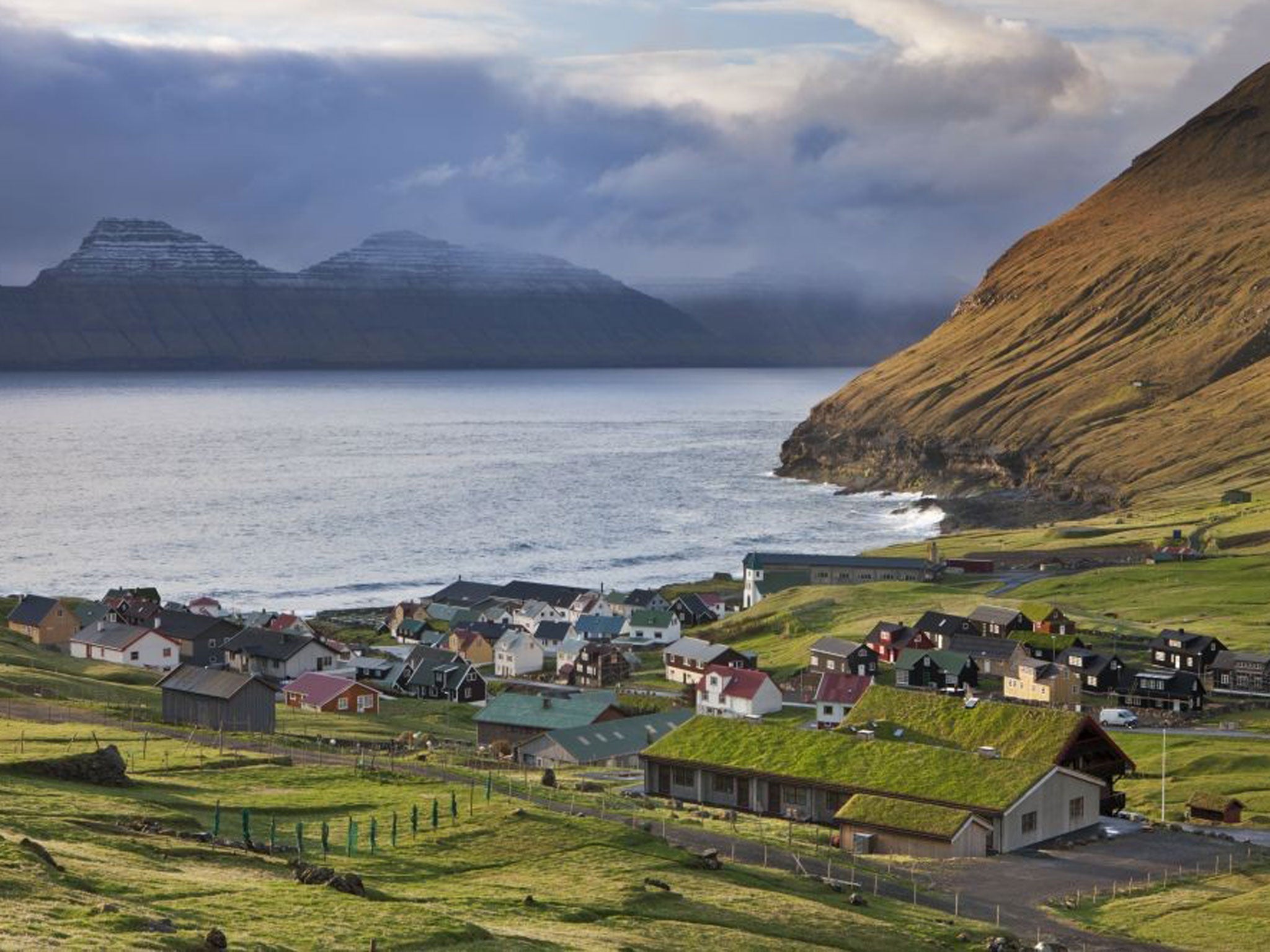Faroe Islands: Tomorrow’s world out in the Atlantic
This remote, Nordic archipelago is notoriously wild and windswept, but the islanders’ laid-back approach to life casts a spell over Mark Jones

Your support helps us to tell the story
From reproductive rights to climate change to Big Tech, The Independent is on the ground when the story is developing. Whether it's investigating the financials of Elon Musk's pro-Trump PAC or producing our latest documentary, 'The A Word', which shines a light on the American women fighting for reproductive rights, we know how important it is to parse out the facts from the messaging.
At such a critical moment in US history, we need reporters on the ground. Your donation allows us to keep sending journalists to speak to both sides of the story.
The Independent is trusted by Americans across the entire political spectrum. And unlike many other quality news outlets, we choose not to lock Americans out of our reporting and analysis with paywalls. We believe quality journalism should be available to everyone, paid for by those who can afford it.
Your support makes all the difference.You always forget something when you go on holiday. This time, it was the sunglasses. This would normally be a Grade-A disaster. But if you had to choose one place to be sunglass-less, it would probably be the Faroes.
My guidebook is frank: “The Faroes lie in the stormiest part of the North Atlantic, directly in the path of Atlantic depressions, and as a result are cloudy, wet and windy throughout the year ….” They apparently get a pathetic four hours of sunshine a day in summer, on average. As for winter … don’t go there, even if you could. If you think a holiday isn’t a holiday unless you’re plastered head to toe in factor 95 sunblock, and the only clouds you see are in your early evening mojito – well, feel free to stop reading now.
But if you have a yearning to go somewhere a bit different, a place of dramatic islands, giant cliffs, deep lakes, enchanting villages and some of the freshest, cleanest air in the inhabited world, then stick with me – because the Faroes are really rather wonderful.
In 1943, Sydney Northgate, a British serviceman stationed in the Faroes, wrote a short book called Kanska – The Land of Maybe. “Kanska” is like “mañana” for people in woolly jumpers: a non-committal affirmative that’s said to reflect the islanders’ laid-back approach to life. But it also neatly sums up the Brigadoon-like feeling you get flying over the sea through the clouds to Vagar, the airport that Northgate and his fellows constructed during the war. There are flashes of rock, glimpses of green, then nothing but a milky mistiness – and suddenly you are down. Maybe. The weather may mean you get diverted to Iceland. Best not make any firm dinner arrangements.
But we landed just fine and the next day dawned greyish, blustery, but dry. From the capital, Torshavn, I took a torturous mountain drive to a secret little bay village called Tjornuvik.

I don’t go in for the typical beach holiday – so I’ll take Tjornuvik’s perfect crescent of silver-grey sand over Barbados any day. I picked my way up the hills, regularly punctuated with waterfalls coursing down the cliffs (there are about 2,000 waterfalls for every island). Spongy emerald meadows carpeted the tiers of the basalt rocks that led to an aquamarine sea (there are about 985 species of “green” in the Faroes).
That Brigadoon feeling again: the world felt empty and muffled. When I got back in the car, I got a huge shock when other humans appeared – a campervan full of weathered German couples. Fearing they might be about to indulge in a little Natural Body Culture – give a German a chilly windswept island and they will take their clothes off on it – I scarpered up the hill.
I hugged a long fjord, crossed over to the island of Eysturoy, then coasted up towards the village of Gjogv for the simple reason of its unpronounceability. Faroese is akin to Icelandic. The islands are administered by Denmark, but were long inhabited by the Norwegians and their closes geographic neighbour is Scotland: the place is culturally, as well as physically, miasmic.
But at least Gjogv was like Brigadoon on one of the days it appears from the mists. Compared to Tjornuvik this was like the Rio carnival with at least a couple of dozen visitors squelching their way up the hill past turf-roofed, black-boarded houses. There was a hotel and a restaurant. And a shop! It sold jumpers. Thanks to The Killing, knitwear has put the Faroes on the map in the way that whaling controversies and occasional Fifa World Cup matches could not. There is a bench looking out on to the verdant cliffs and seascapes. The Danish crown prince once sat on it. This counts as a “sight” in the Faroes.
There are 18 main islands, of which 17 are inhabited and one whose only residents are a few sheep. That’s Litla Dimun. Its larger neighbour, Stora Dimun, has a permanent population of two adults and two children. A helicopter flies there four days a week and you can stay in the schoolteacher’s house. Helicopters are the buses of Faroes: operated by Atlantic Airways, they are heavily subsidised by the state. I just drove and walked: a spectacular network of tunnels links the main islands.
The one slight disappointment was the boat trip to the Vestmanna bird cliffs. This promised to be one of those National Geographic moments, where you gaze vertically up at vertiginous sea stacks, deafened by the din of fulmars, kittiwakes, guillemots, razorbills and puffins. The boat was there, the cliffs were there, but the birds had gone on holiday. Too late in the season. For most of the summer, you will get the full-on screeching, swooping and pooing experience. The puffins get the Facebook vote, but it’s the guillemots, gannets and kittewakes that excite the birders who, like the objects of their passion, fly in from all corners of the globe to be here.

The main town, Torshavn, revels in the title “smallest capital in the world”. And it does seem like an oversized village of red clapboard houses straggling alongside the quay. Mind you, I was there on a summer Saturday night; and with the windows open in my small room in the youth hostely Hotel Torshavn, it’s certainly not the quietest capital in the world. If it’s tranquillity you’re after, head a mile above the town to the Hotel Foroyar.
Wherever you go in Scandinavia, there is designer hyper-inflation. Norway, Finland, Sweden and Denmark all compete to have cooler, glassier buildings, trendier bars and more important cutlery than the neighbouring lot. The Faroes isn’t really in the race: it is aesthetically closer to the Outer Hebrides – rather too practical and rugged, with a tad too much flaking red paint, for the editors of Wallpaper*, Elle Decor or Monocle. The Hotel Foroyar is the exception: a long, low building with a turf roof that’s embedded in the side of the hill. Inside, you are never more than a few feet from a seminal installation or a significant sofa. But like all the best Scandinavian designs, the hotel puts function first: and its function is to give everyone a view of the scudding clouds and the tufty slopes leading down to the capital.
On the last night, I heard there was a festival going on in the neighbouring island of Nolsoy. Thinking this would be a charming event where people in felt clothing chanted epic poems, I took the ferry from Torhavn harbour. It turned out to be a bit more like the fête on Craggy Island in Father Ted. The main attraction was a decrepit mechanical cow in a child’s paddling pool. A nice little sweater shop was open. Otherwise, and a lot more popular, there was beer.
The festival commemorates the feat of a local man, Ove Joensen, a hero who rowed to Denmark to raise funds for the community’s swimming pool. The idea seems to be to remember Ove (who drowned some months after performing his feat) by drinking a swimming pool’s worth of Black Sheep lager. The mood was very jolly, but by 11pm I was ready to take a ferry back before it became a little too jolly for comfort.
There is a raucous character to the Faroes; but that’s not what stays with you. Two hours from the UK, you are in an amazing land of mist and light, where villages appear and disappear and people speak in a language that’s as close to the Viking tongue as you’ll ever hear.
At the end of every trip, you always realise you’ve brought something you never used. This time, it was my Gore-Tex jacket. It hadn’t rained once. But I had missed my sunglasses very much indeed.
TRAVEL ESSENTIALS
Getting there
Mark Jones travelled with Atlantic Airways (00 298 34 10 10 atlantic.fo), which operates twice-weekly flights from Stansted from June to August.
Staying there
Hotel Torshavn (00 298 35 00 00; hoteltorshavn.fo). Doubles from Dk1,290 (£143), including breakfast.
Hotel Foroyar (00 298 31 75 00; hotelforoyar.com). Doubles from Dk1,800 (£199), including breakfast.
Eating there
Koks (00 298 333 999; koks.fo).
Hvonn (00 293 350 035; hvonn.fo).
Etika (00 293 319 319; etika.fo).
Gjaargardur guesthouse (00 298 42 31 71; gjaargardur.fo).
More information
Join our commenting forum
Join thought-provoking conversations, follow other Independent readers and see their replies
Comments